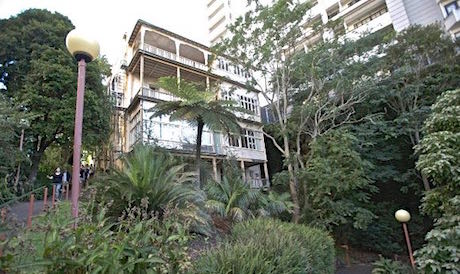The Auckland Catholic diocese has developed concept plans for a 10,000 square metre high-rise office building and car parking on property behind Newman Hall.
The property is also home to a freshwater spring that was essential to life at two local pā and their surrounding gardens.
Called Wai Ariki, or chiefly waters, the spring has been listed as a Site of Significance to Mana Whenua under the incoming unitary plan.
Mana whenua scheduling requires property owners to seek iwi approval for work on their land.
In a deal with the Auckland City Council, the diocese of Auckland had received approval to develop land.
In return the diocese was committed to restore Newman Hall, a 150-year-old category A listed historic building in Waterloo Quadrant near the High Court.
The church says it now does not know what it can do with the site.
The Auckland Diocese has opposed the Newman Hall listing in a submission to the Proposed Auckland Unitary Plan (PAUP).
It has been heavily critical of the mana whenua process.
Newman Hall was built around 1863 by Jewish businessman David Nathan, the founder of LD Nathan and Company.
The Catholic church has owned Newman Hall since the 1950s and uses it as the chaplaincy for Auckland University.
One of the two iwi which nominated the site for scheduling is Ngati Whatua o Orakei.
Trustee Ngarimu Blair said as far as he was aware the church had never spoken to the iwi about it.
Just because the site was scheduled didn’t mean it couldn’t be developed, he said.
“I thought sacred water would be something of value and interest to the church.
“The first thing is, they should come and talk to us – let’s have a talk about how the significance of the spring can be preserved in any future development.”
In the early days of European settlement local Maori used to trade the water with colonial ships, rolling it in barrels down to the waterfront, he said.
Later when iwi lost control of the land a bottling factory was built around the spring and the bottled water sold on Queen St.
Today the spring still bubbles through the ruins of the old factory, and some Ngati Whatua people collect it for use in ceremonies, he said.
Source
